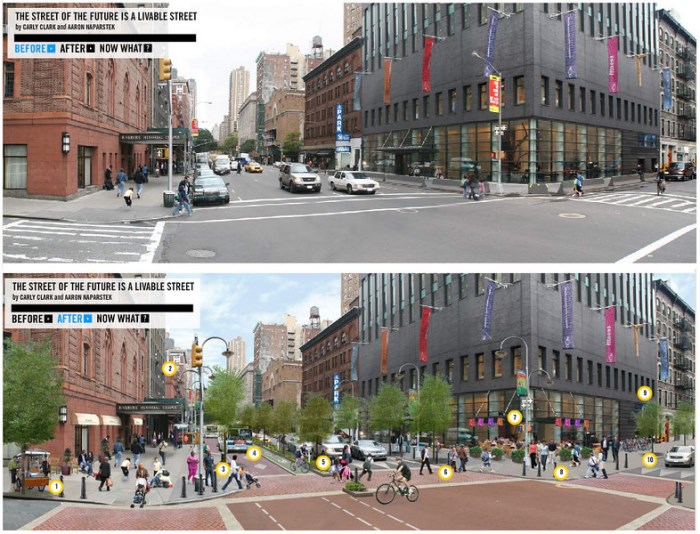Nearly 32,000 Americans die each year from traffic accidents. This is the equivalent of a fully loaded jumbo jet crashing each week. Highway engineers go through the morbid exercise of trying to estimate the number of inevitable deaths on any section of roadway they design. Putting this in context – wouldn’t it be ludicrous if an architect estimated that a certain number of people would inevitably die annually as a direct result of using a building she designs? Yet, because these traffic crashes are spread out across the nation – we scarcely pay attention to the enormous toll driving exacts on society.
Traffic engineers often design roads to the highest code standards possible in the mistaken belief that this makes them safer. Widely accepted research has shown that this in fact, not the case. All that this does is protect departments of transportation from litigation in the event of injury or death from allegedly “deficient” roads – while also resulting in oversized highways, with larger than needed lane widths, and ‘clear-spaces’ on the sides which eat into our valuable farmland, wetlands and forests. Instead, engineers should be focusing on ‘context-sensitive’ design at the human scale– that relates to how the roadway interacts with the surrounding environment and provides visual cues to enable drivers to make safer and more aware maneuvering decisions.

Research has also shown that a greater mix of traffic modes in an area, makes it safer for all users of the transportation network. Investing in multimodal transportation systems, instead of solely auto-based ones is one of the biggest ways to achieve fewer transportation related fatalities.
Citations:
- Number of crashes: https://www-nrd.nhtsa.dot.gov/Pubs/812006.pdf
- Traffic safety: https://citeseerx.ist.psu.edu/viewdoc/download?doi=10.1.1.170.2678&rep=rep1&type=pdf
- Design: https://www.embarq.org/sites/default/files/Saving-Lives-with-Sustainable-Transport-EMBARQ.pdf
–Ash Anandanarayanan, Transportation Policy Analyst
